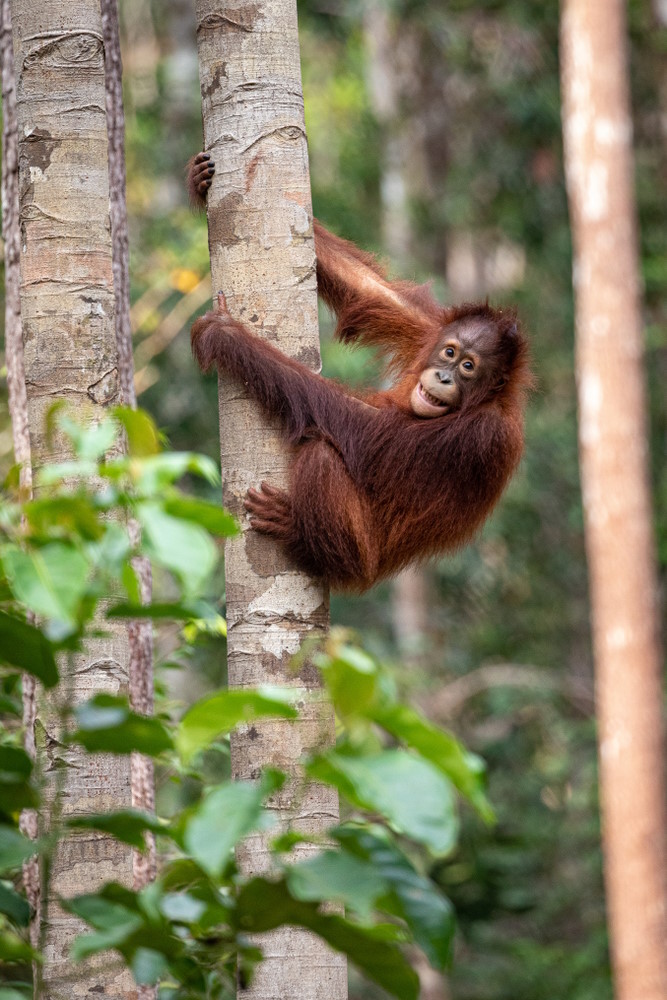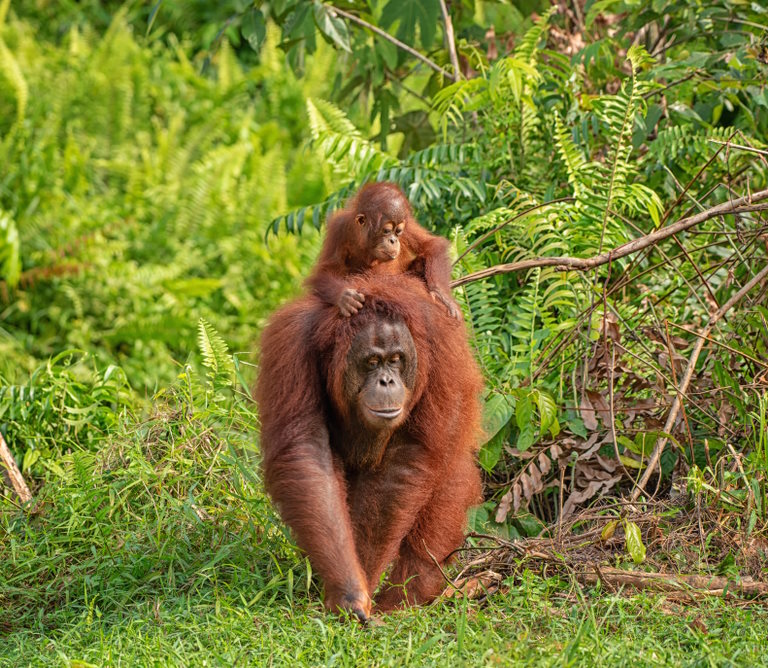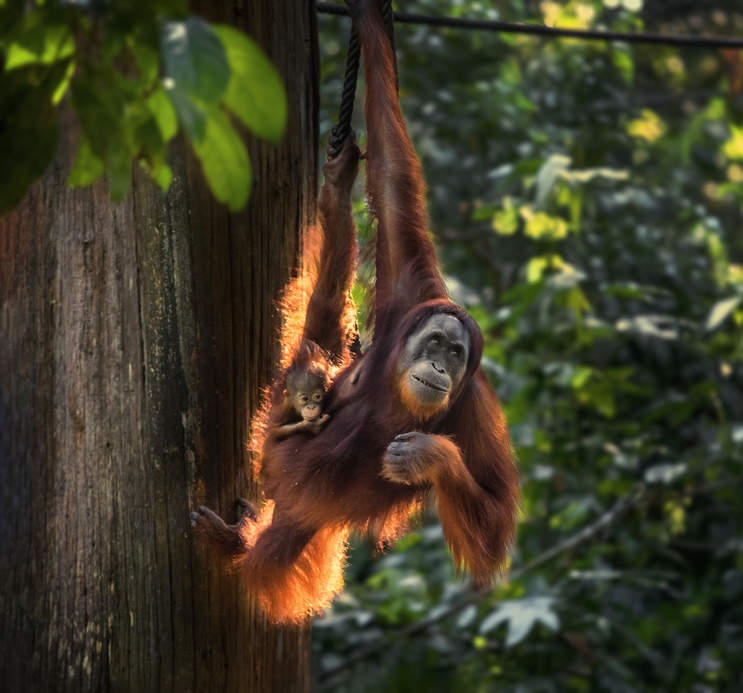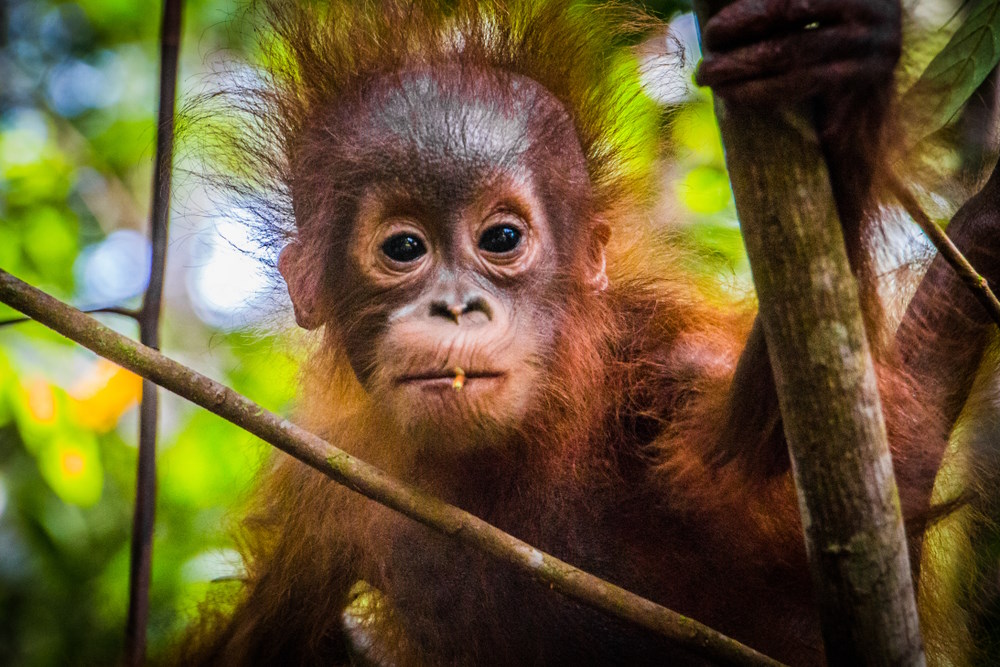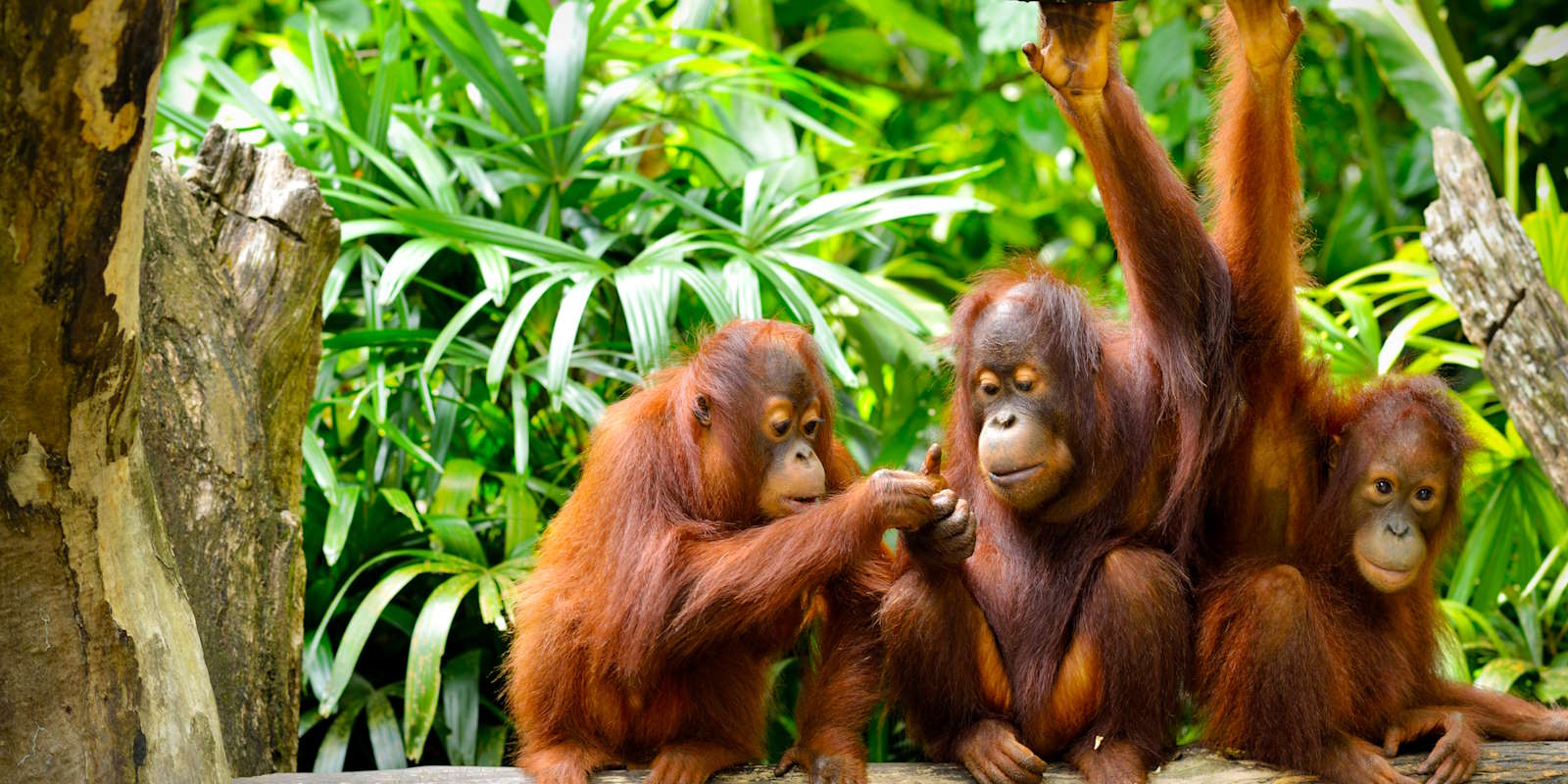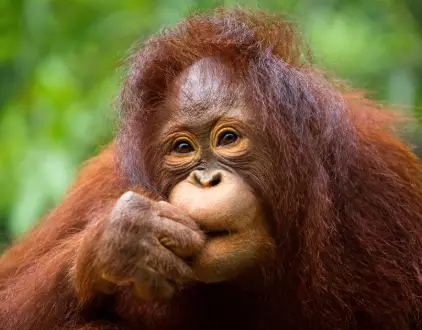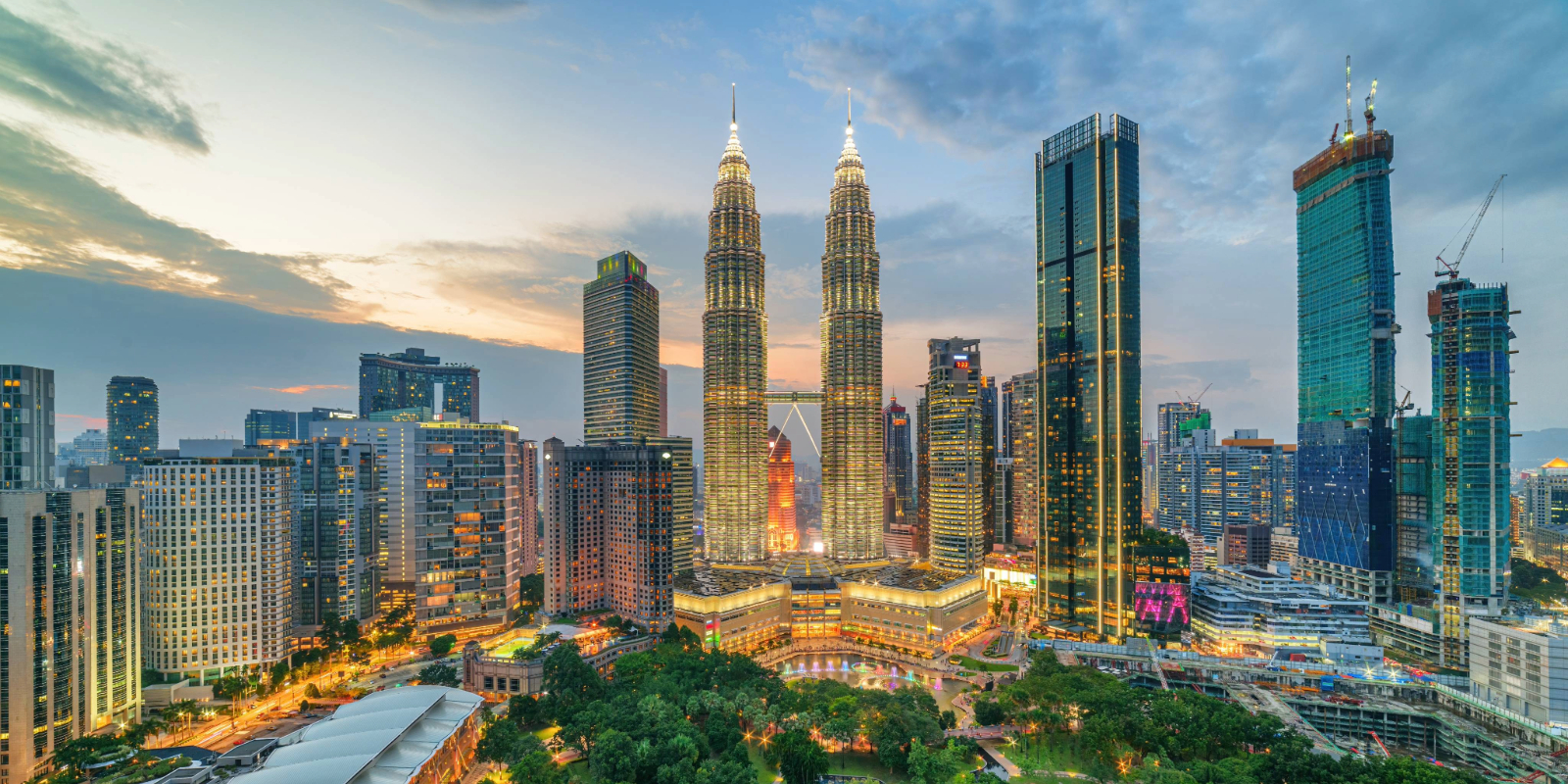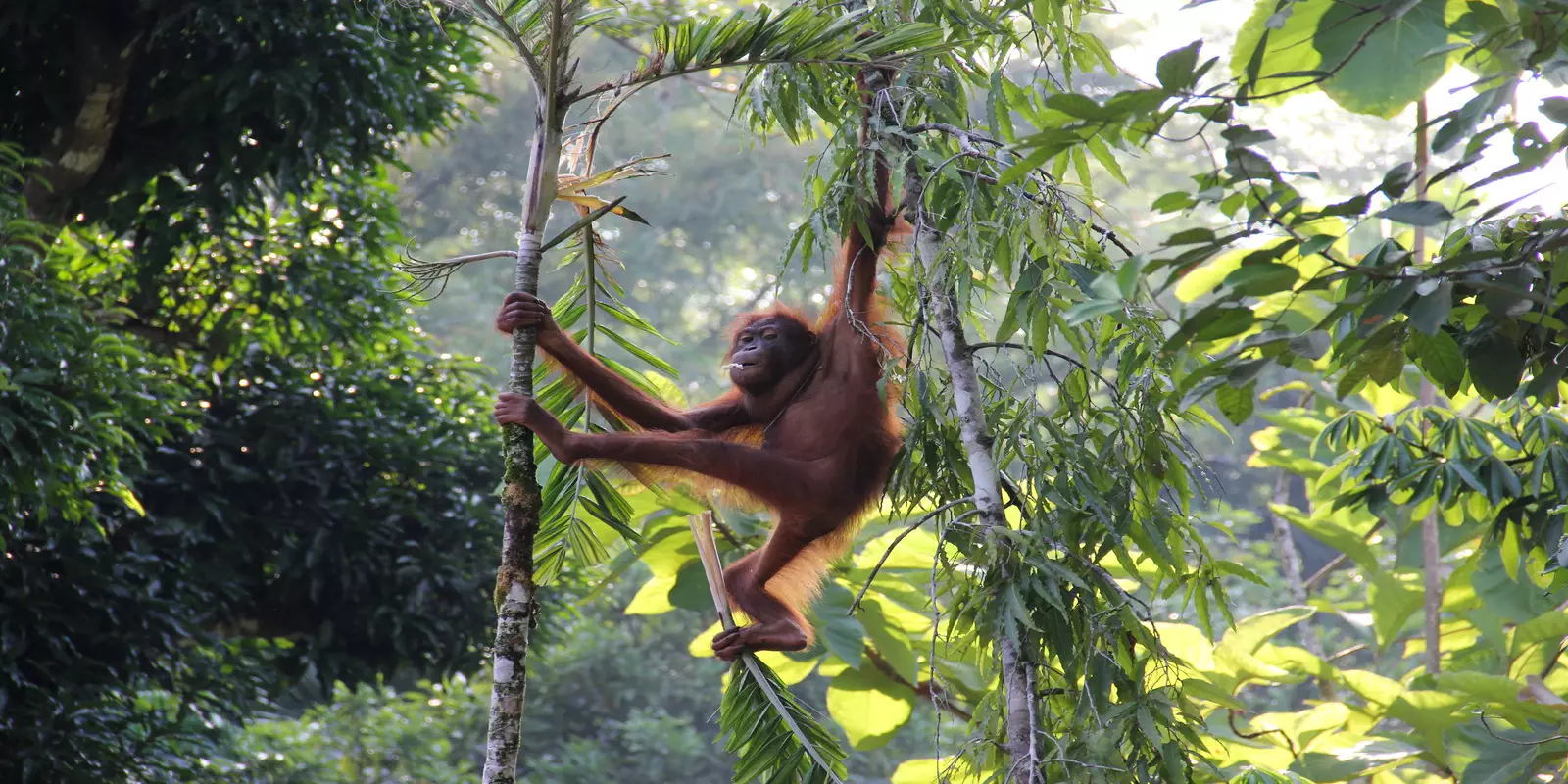Orangutan Basics
The world’s largest and heaviest tree dwelling mammal, orangutans are Asia’s only great ape. Living exclusively in the rainforests of Sumatra, an Indonesian island, and Borneo, an island split between Malaysia, Indonesia and Brunei, their name means ‘person of the forest’ in the Malay language. There are three species – Bornean, Sumatran and Tapanuli (only identified in 2017) – each differing slightly in appearance but all considered critically endangered due to deforestation, poaching and the illegal pet trade.
Living 30 to 40 years in the wild and up to 60 in captivity, orangutans lead a solitary life within a ‘home range’, though mothers and babies form a strong bond, spending between 6 and 8 years together as the young orangutan learns to live alone. One of the most intelligent great apes, orangutans use a variety of sophisticated tools, have been observed on numerous occasions to learn new skills and behaviours and, like other great apes, display emotions including laughter-like vocalisations when playing.
Orangutans have long muscular arms and gripping hands and feet for life in the treetops, where they spend 90% of their time, even sleeping in complex nests that they build high off the ground from branches and vegetation. They spend their days foraging for food, resting and travelling, eating a huge array of wild fruits, young leaves and shoots, insects, soil, tree bark and occasionally eggs and small invertebrates. Critical to the health of the forest, orangutans play an essential role in seed dispersal, eating over 500 plant species.
